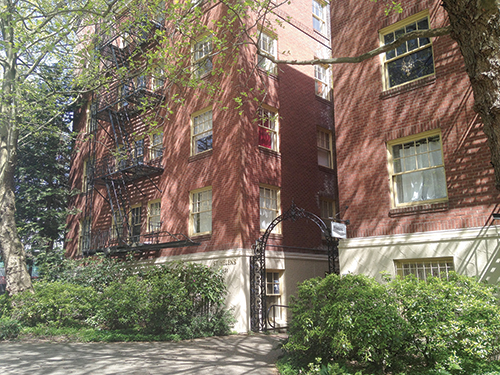
Recently there’s been an ongoing debate over the construction of apartment complexes built without reserved parking for their residents. While some people applaud the effort to increase the incentives to forgo owning a car, others claim it’s impractical and will lead to more crowded and competitive curbside parking in residential areas.
Despite the validity of this debate, what people should instead be considering is the city’s overwhelming lack of affordable housing.
During the 1999 legislative session, Oregon cities lost the ability to require homebuilders to provide a certain amount of affordable housing. In addition to this, Portland has seen a consistent decrease in apartment vacancy and a steady increase in the average price of rent.
According to The Oregonian, the average rent for a one-bedroom apartment rose from $706 in 2011 to $774 in 2012. In 2012, Portland’s vacancy rate was 2.2 percent—the second lowest in the entire nation. The average length of time that an apartment remained vacant between tenants fell from 43 days to 37, and in inner Southeast Portland apartments are vacant for an average of 11 days.
So, in addition to rising costs, it’s almost impossible to even find a place to rent. A report issued by Reis Inc. (a commercial real estate firm) found that Portland was just behind the New York City metro area in vacancy rates, The Oregonian reported.
All those things you’ve heard about it being impossible to find a place to live in NYC? It’s happening right here. In your city.
This affordable housing desert has more than its fair share of detrimental effects: Rising rent, increased competition for apartments and substandard housing are just a small sample. This leaves Portland residents expending more time and effort trying to find apartments and paying more for them than they did in the past.
The problem doesn’t end there, either. The demand for cheap housing is already pretty high, and it’ll only increase. We need to stop constructing high-rise condo buildings for the affluent and increase construction of affordable housing. It would be an added bonus if said housing wasn’t just built on the outskirts of town either but actually placed near public transit lines.
Another major consequence is how the lack of affordable housing contributes to an already serious concern: homelessness. Take a look anywhere in Portland, but especially downtown, and you’ll see just how prevalent it is. Unlike many other metropolises that I’ve lived in or visited, it’s absolutely impossible for you to ignore.
Interlink Counseling Services, an organization dedicated to assisting the homeless and the poor, states on its website that “between 1973 and 1993, 2.2 million low-rent units disappeared from the market,” which directly correlates to the “housing crisis for poor people.”
Linking homelessness and affordable housing is the disappearance of single-room occupancy housing, which is used to house the poor as well as those suffering from mental illness or substance abuse. According to Interlink, from 1970 to 1986 Portland lost 59 percent of its SRO hotels, putting out on the street people who may not be able to afford a traditional apartment or are too dependent to obtain one. For many, SROs made the difference between stable housing and no housing at all.
Part of the blame for this has to be put on city officials. Back in 2003, they promised to construct affordable housing on the South Waterfront by creating 430 apartments or condos for low-income residents. However, not one of these has been built. Rather, the area remains entirely for affluent residents, despite a $125 million contribution from taxpayers.
The issue of affordable living also includes student housing. My time living in the Saint Helen’s Court Residence Hall went well enough. However, the size and quality of the unit and facilities didn’t match the price. I certainly didn’t mind living there, except for the price I paid for it.
An apartment building that still has actual iceboxes shouldn’t cost as much as what I paid—things like that don’t add charm; they’re a reminder of the building’s age (and don’t get me started on the tub-only bathrooms, where installing a shower head is strictly prohibited).
When contrasting that building with the newer student housing buildings, it would seem obvious that a corresponding difference in price should exist, yet the rates don’t greatly differ.
Living on campus offers many advantages, but it’s not much cheaper (if at all) than any of the apartments I’ve lived in since. The path to obtaining a higher education has enough hurdles and obstacles as it is, usually placing an unprecedented financial burden on students and their families. Student housing should be significantly cheaper than off-campus living and represent one less discouragement to attending university.
There isn’t a single cure, but one thing that would make a big difference is fewer high-rise condos and more affordable apartments.

